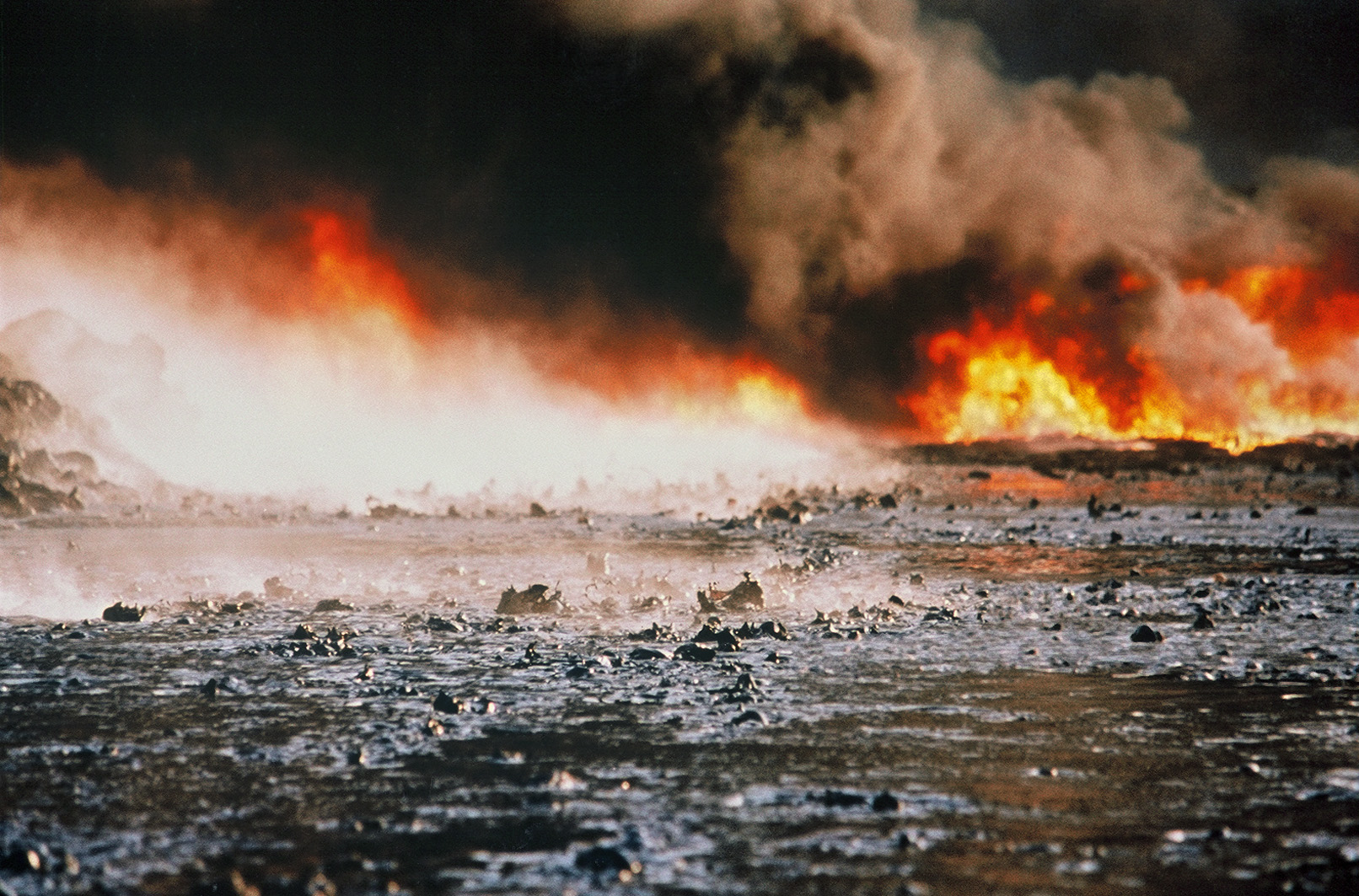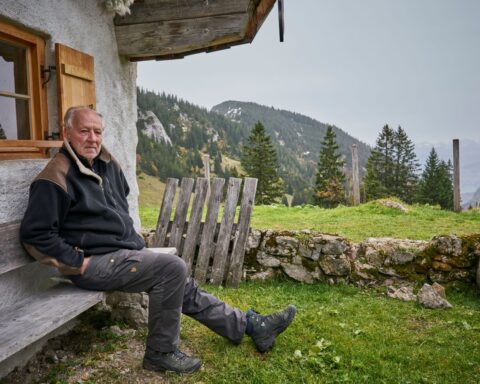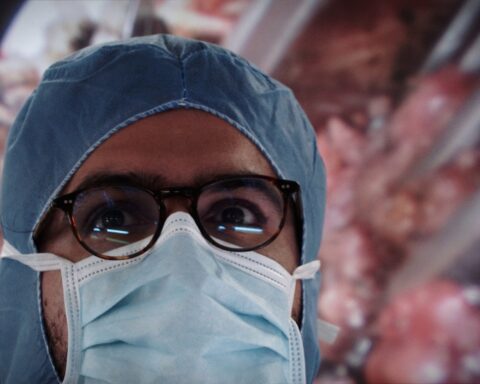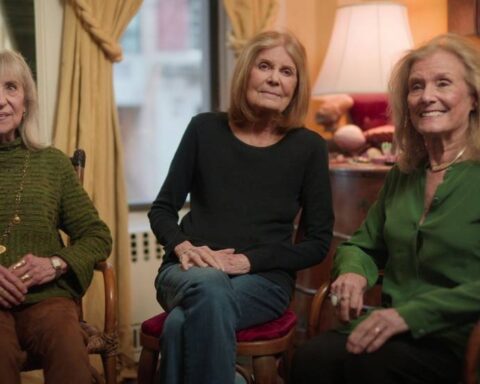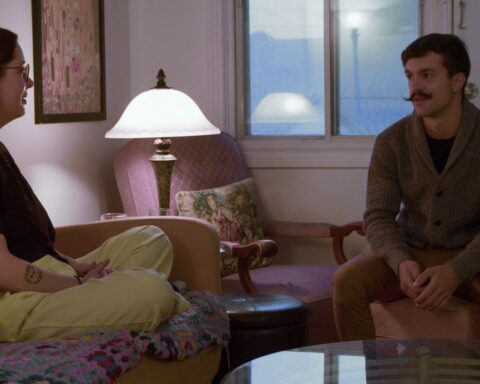In 1945, when the United States dropped atomic bombs on two cities in Japan, we entered a new Age of the Apocalypse. The conditions of the old world were over. Modernization ushered in new opportunities and wealth and improved quality of life, but it also introduced a new threat of total annihilation. Now, with an escalating climate crisis, successive pandemics, ongoing war, and general social malaise, the transformative power of the apocalypse casts a shadow on almost all areas of modern life. It’s reflected in the art we consume, whether it’s fictional movies about Texas-sized asteroids and zombie infections or documentaries that employ the aesthetics of apocalyptic narratives.
The word “apocalypse” has long been divorced from its theological origins in our largely secular world. While initially referring to a mystical end of the world, as described in the Book of Revelations, it’s now more closely associated with any end-of-the-world scenario. Even the study of the apocalypse, eschatology, has begun to branch out to explore the subject from both a theological and a secular point of view.
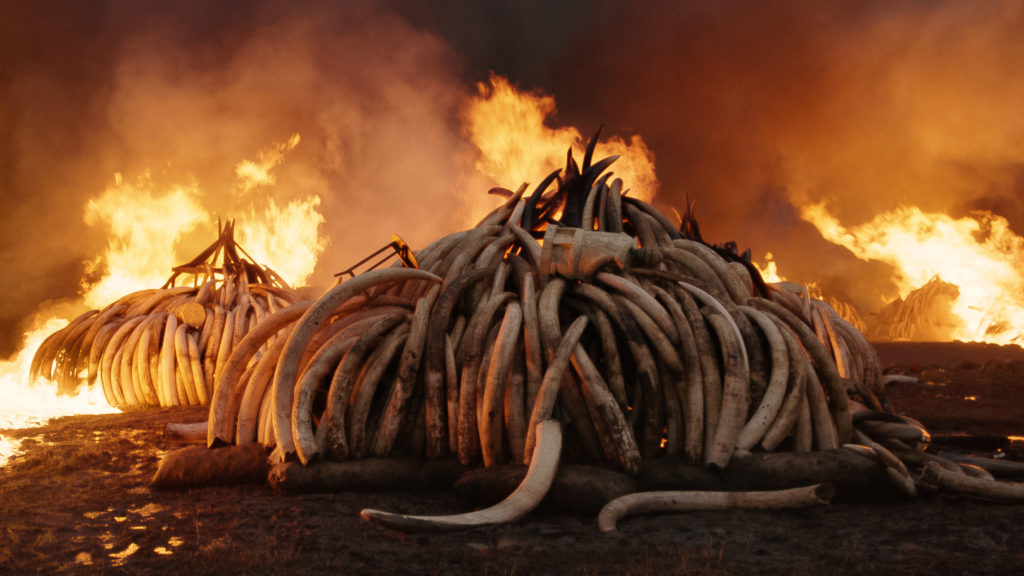
“Apocalypse” does not strictly mean the end of the world: its Greek origins are a bit more complex. The Greek word translates more directly to “revelation,” which insists on a greater truth or experience being revealed to the people. It’s a word often associated with transformation and has been adopted as a framework by marginalized groups who have suffered genocide or colonial oppression. Understanding their experience through an apocalyptic lens helps clarify the suffering they experienced, an end of culture and civilization, and offers the opportunity to imagine a new way of life. The “revelation” of greater truths about the world, their oppressors, and their resilience, opens up new pathways to rebuild and reimagine new futures.
Many documentaries explore, in one way or another, the apocalypse. From the onslaught of Atomic Age parables to the endless conflicts of movies like Armadillo (2010) or For Sama (2019), there’s no shortage of films that touch on the apocalypse in one shape or another. Spike Lee’s When the Levees Broke (2006) showcases a natural disaster that feels almost mystical, like the great flood that washed across the Earth in Genesis. It touches on the destruction of a civilization and a people while also “revealing” truths about government inefficiency and apathy. It’s a movie about an event, but it also imagines a different future for the people of New Orleans, where they can rebuild and affirm their independence from oppressive government and corporate overlords.
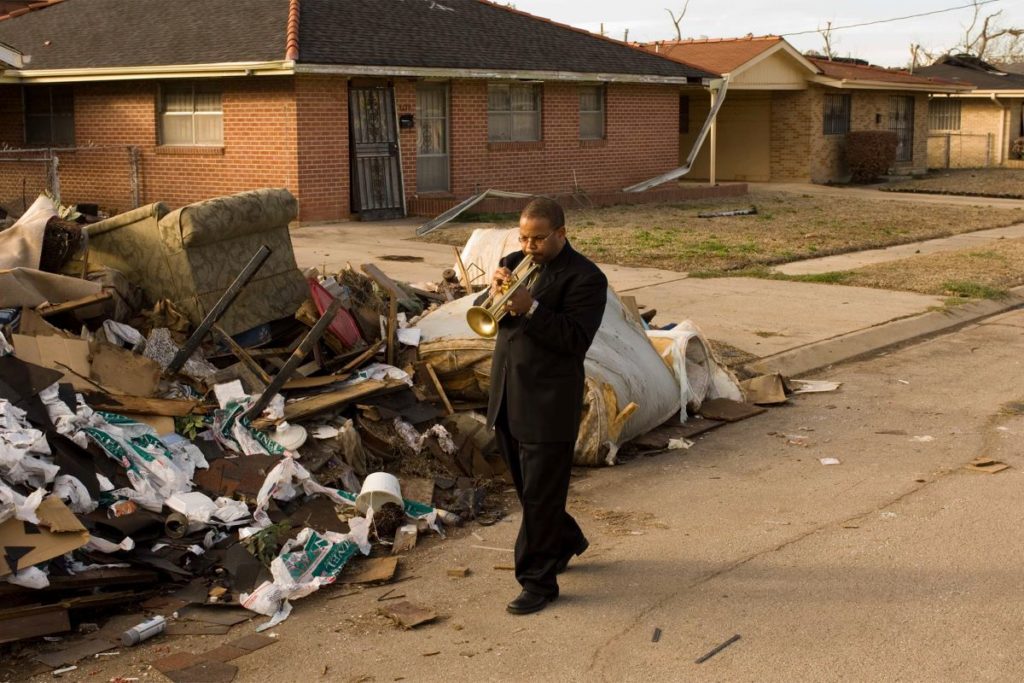
Looking at a documentary like When the Levees Broke through an apocalyptic lens, however, also illuminates how easily the term can be abused. The imagery of New Orleans after Hurricane Katrina was misused to “other” the predominantly Black residents. Lee explores how descriptors like “post-apocalyptic” were used in the context of Katrina, and how the term was dehumanizing and ignored the reality that what happened in New Orleans was not an anomaly but a direct result of policy decisions around infrastructure, the environment, and social services. It can efficiently serve the prevailing narrative that minimizes the enormous loss of life, wealth, and community. Turning people into symbols to fit into an aesthetic framework contradicts what Lee was trying to do.
Using the concept of apocalypse broadly is rarely illuminating, as it too often seems apt in our collapsing world. Approaching it instead as an aesthetic framework embedded within a literary tradition can be more valuable. Whereas there are certainly echoes of the end of the world in works like When the Levees Broke, the aesthetic approach taken by Lee privileges a testimonial and witness-based approach rather than a mythical one.
Beyond the endless scope of films that touch on elements of the apocalyptic end, a sub-genre of documentaries attempts to use the apocalypse as an aesthetic framework. They feature few human characters, often embracing a post-human perspective. Through either narration or sound design, they invoke the more mystical elements of the end. They’re movies that build the apocalypse into their vision, embracing the paradox of destruction and rebirth. More often than not, they can also be understood as a subgenre of the landscape film. These movies explore humanity’s presence, impact, and eventual disappearance from the Earth.
Werner Herzog’s Lessons of Darkness is a great example of the sub-genre. In 1992, Herzog shot the burning of the oil fields in post-Gulf War Kuwait. Using literary title cards and occasionally an abstracted, almost alien narration (by Herzog, of course), the film’s images of deserts and fires and men in fire-proof suits appear unfamiliar and almost surreal. Interviews occasionally break up the decontextualized images as Kuwaitis describe how they are impacted by war—their lives devastated, their families torn apart. The whiplash of the alien imagery and the real consequences of war illuminates the falsehoods of the 24-hour news cycle and its oversaturation of war images.
What Herzog achieves with Lessons of Darkness serves to both humanize and dehumanize. It forms a narrative that competes with the new culture of 24/7 news coverage by creating images that resonate with beautiful ugliness. In the compelling book Herzog on Herzog, the director explains that he hoped that his images were not obviously from our Earth—an effect that creates a strange eeriness that underscores war’s devastating transformation and destruction.
We see a similar approach in Ed Burtynsky, Jennifer Baichwal, and Nick de Pencier’s Anthropocene: The Human Epoch (2018), which brilliantly shows otherworldly images of our unofficial contemporary geological era; a new period in Earth’s history where human activity has had a significant and hugely destructive impact on the planet’s climate and ecosystems. With acclaimed photographer Burtynsky on board, the film features strangely beautiful imagery, which illuminates the reality of human behaviour in the world in a way we don’t often see in discussions about climate change and the dissemination of natural landscapes. The documentary also features interviews with people worldwide who are directly impacted by these changes. The images, shot in such a way that renders them alien, are counterbalanced by the testimonials of people living within these new landscapes.
Lessons of Darkness and Anthropocene employ similar tactics in illuminating the realities of our changing world, while also maintaining some connection to more traditional documentary filmmaking through interviews. The contrast between interviews and poetic shots of transformed landscapes illuminates the contradictions inherent to the stories we tell about our planet, how we diminish our species’ destructive impact on the Earth and silence the voices of those most impacted.
Some documentaries take the apocalyptic aesthetic even further, imagining a world that seems almost post-human and is directly informed by apocalyptic literature. Godfrey Reggio’s pivotal 1982 experimental documentary Koyaanisqatsi, whose title refers to a word from the Uto-Aztecan language spoken by the Hopi people of northeastern Arizona that means “life out of balance,” features no dialogue and can be best understood as a poem about man, nature, and technology.
What makes Koyaanisqatsi apocalyptic? The burning oilfields of Kuwait make for an apparent end-of-the-world metaphor in Lessons of Darkness, but Reggio’s abstract film asks profound questions. With the quick advancement of technology in the past century having completely transformed how we live and experience life, have we lost touch with our humanity? Have we ceded our power and relationships to the higher forces of capitalism, industry, and machine?
While far more revolutionary at the time of its release, the movie’s use of 70mm film and slow/fast motion transforms the way we look at familiar landscapes. If cinema is the art of sculpting in time, the film adopts a way of perceiving time that is only possible through technology. It adopts a post-human perspective that underscores our finite time on Earth and how we’ve squandered it in favour of development and destruction. The film ends with the translation of the Hopi prophecies sung during parts of the film:
- “If we dig precious things from the land, we will invite disaster.”
- “Near the day of Purification, there will be cobwebs spun back and forth in the sky.”
- “A container of ashes might one day be thrown from the sky, which could burn the land and boil the oceans.”
Though loosely integrated, the references to Hopi mythology and language work in a twofold manner in the film. The idea of Indigenous futurism becomes a framework for First Nations people (like the Hopi) to explain their history, marred by disease and warfare that reduced their populations and all but eliminated their civilizations. It is more than just a cautionary tale about the fragility of human society; it also offers the promise of new beginnings—the possibility of changing the course of history before it’s too late.
Koyaanisqatsi features countless human characters, occasionally in isolation (as with the many images of unhoused people) but more often in huge crowds. They’re not treated as individuals, however, but almost as ants: with the same impersonal lens as a nature documentary showing ants climbing up a branch.
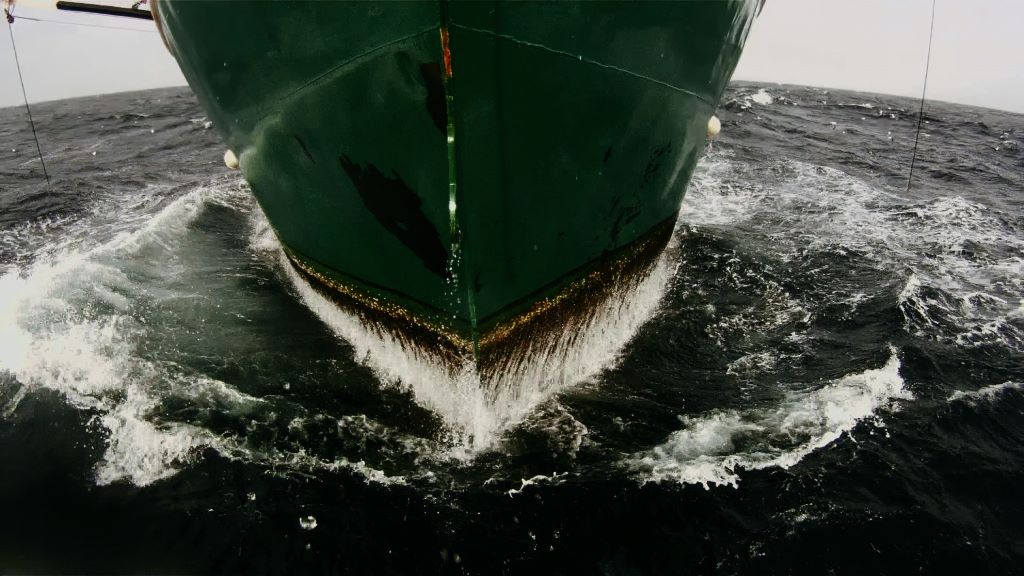
The 2012 documentary Leviathan operates under a similar pretext to Koyaanisqatsi: diminishing the individuality of its human characters, employing a sensory approach to space, and invoking thought and feeling through mythology and mysticism. Directed by Lucien Castaing- Taylor and Véréna Paravel of the Sensory Ethnography Lab at Harvard University, the film shows life on a North American fishing boat using waterproof GoPros. Without narration, dialogue, or traditional music, the movie doesn’t employ any obvious linear pattern in depicting life on a ship.
The title refers to a Biblical sea monster that often represents chaos and destruction and is portrayed eating or consuming souls. In many medieval paintings, it’s described as a serpent or a creature with an enormous mouth and is often equated with Satan himself. The Leviathan features prominently in the Book of Job and is described as a monster that cannot be controlled or defeated.
What does this mythical imagery have to do with the film? Well, it offers a framework for thinking about the images and conditions on board the ship. It renders the human desire to control nature as a deep-sea fisherman to be ultimately doomed, a futile attempt to control the uncontrollable. It underlines our insignificance against the majesty of the sea. It also showcases our hubris, the fatal flaw that we could ever hope to defeat the undefeatable as a species.
In Leviathan, humanity is small and insignificant. Technology allows for vantage points inaccessible to us, whereas the majesty of nature still poses a significant threat to the physical well-being of those on board. The work’s cold, almost alien point of view renders pipes into almost-organic tentacles that evoke not only the Beast from the deep but also the fleshy monsters of Cronenberg, where technology and nature meet. While the film depicts man’s mastery over nature, the authority we hold over it feels tenuous at best and cruel at worst. As fish dead and alive slosh in blood and seawater during lingering sequences, we’re forced to reckon with their pointless and empty deaths. Should we mourn the dead fish? Would a higher power mourn us?
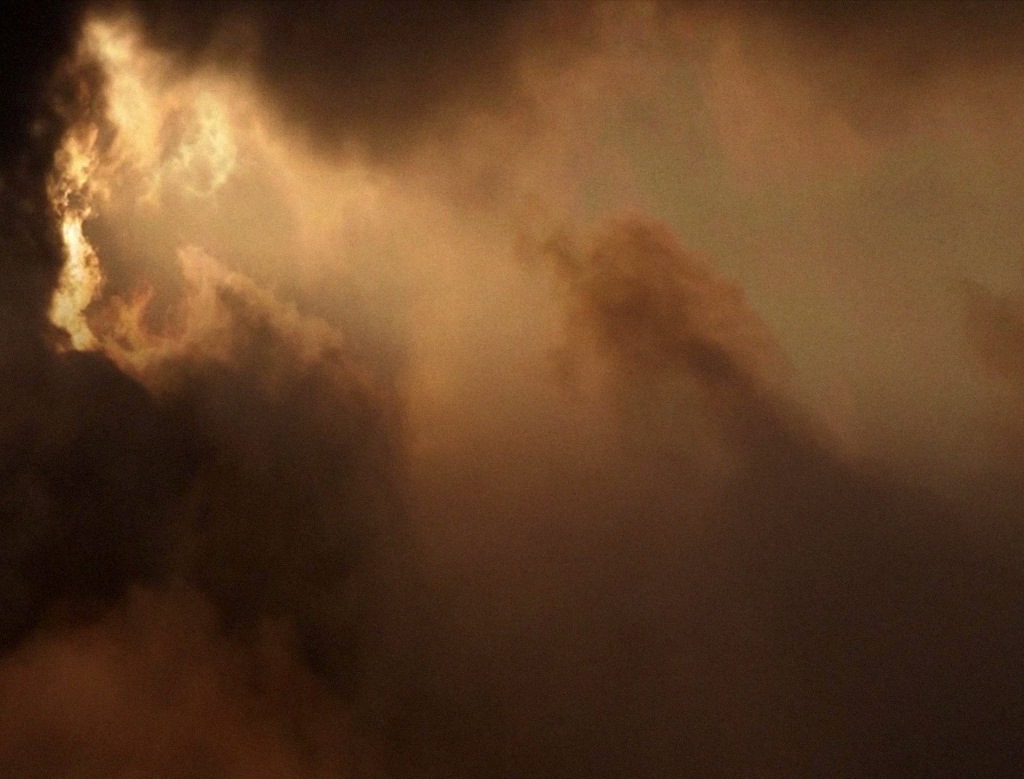
The similarly abstract experimental documentary Sleep Has Her House (2017), directed by Scott Barley, takes things to an even greater extreme of alienation. Shot in the dark of the woods during a rainstorm, there’s no trace of human influence on any of the painterly landscapes. If this is an apocalyptic film, it imagines life beyond humans, pre- or post-history.
The film similarly features many shots of light peeking through the heavens, evoking familiar theological imagery of God looking down from above the clouds. The storm, again, evokes the storms that flooded the Earth during Noah’s time. However, without human life present, the Biblical storm loses its symbolic resonance. It becomes just an act of nature, neither good nor bad. Where does God fit in a world without humans?
Perhaps the apocalypse intended to destroy human life is necessary for the planet’s survival. Drawing a comparison to Leviathan, maybe humanity is the sea-beast, an all-consuming monster that has to be stopped. If we are gone, only then can life resume.
An argument can be made that all contemporary films are being made in the Age of the Apocalypse, an era of unprecedented climate disasters, out-of-control technology and growing social unrest. Yet a handful of documentaries have been employing the aesthetics of apocalyptic imagery in a more literary sense to explore humanity’s place on Earth. The apocalypse documentary imagines a moment of transition through poetic or mythical imagery: Man either loses control of his future, disappearing and doomed to be forgotten, or forges new ways of thinking and imagining the world.




